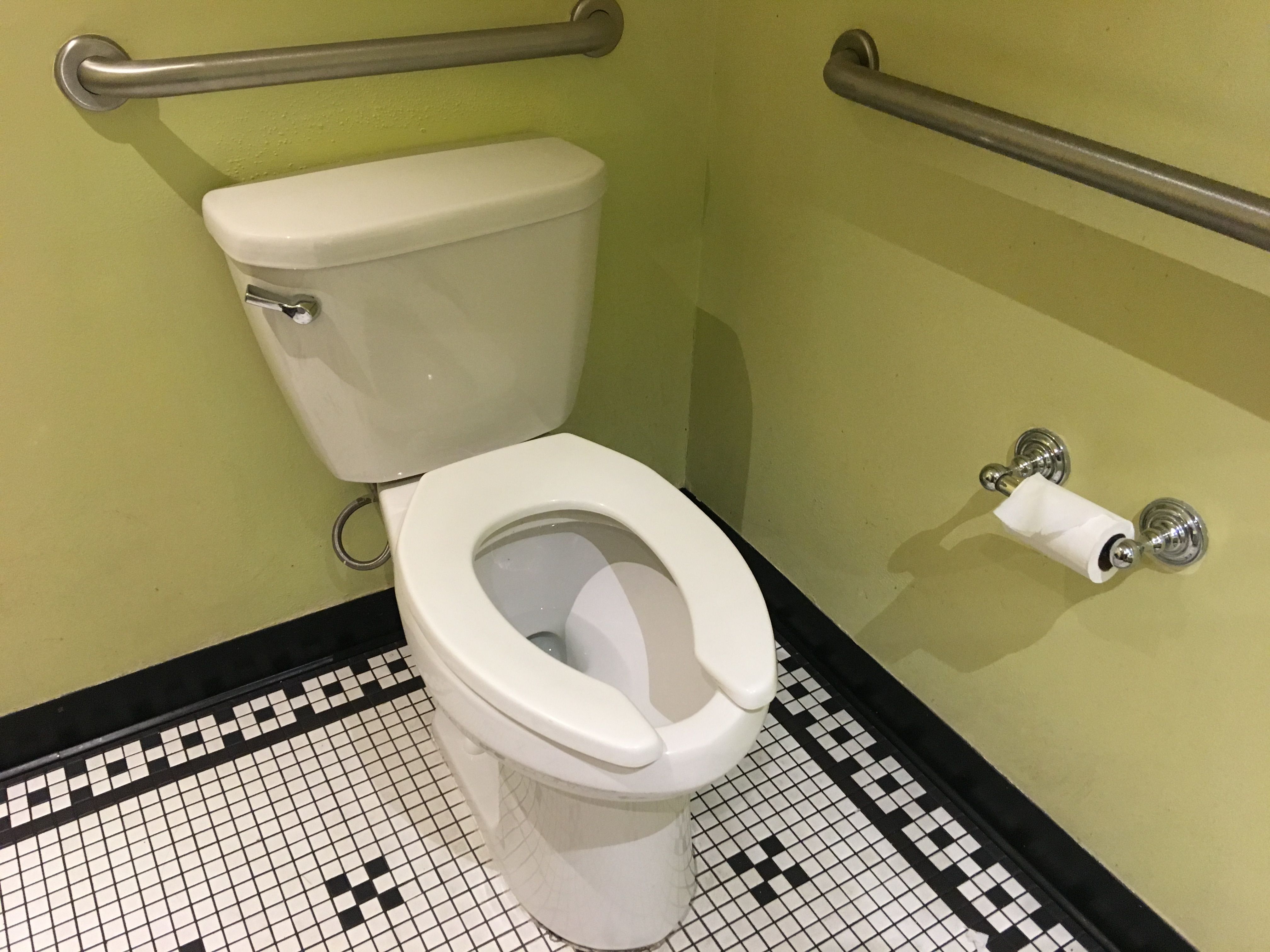Public Bathroom Toilet Paper


Public restrooms are essential for maintaining hygiene and sanitation, and toilet paper plays a vital role in this process. While often overlooked, it is a crucial component of a clean and comfortable public restroom experience.
Types of Toilet Paper
The type of toilet paper used in public restrooms can vary depending on factors like budget, usage volume, and environmental concerns. Here’s a breakdown of the most common types:
- Single-ply: This is the most basic type of toilet paper, often found in budget-conscious establishments. It is thin and can feel rough, but it is also the most cost-effective option.
- Double-ply: This type is thicker and more absorbent than single-ply, providing a more comfortable experience. It is a common choice for public restrooms due to its balance of cost and quality.
- Recycled paper: Made from recycled materials, this type is an environmentally friendly option. While it may have a slightly different texture, it offers similar performance to other types.
Role of Toilet Paper in Hygiene
Toilet paper is crucial in preventing the spread of germs and infections in public restrooms. It helps maintain personal hygiene and provides a barrier between individuals and surfaces.
Proper use and disposal of toilet paper are essential to its effectiveness.
Tips for Proper Usage and Disposal
- Use enough toilet paper: Avoid using too little, as it may not be sufficient for proper hygiene.
- Dispose of toilet paper properly: Flush used toilet paper down the toilet and dispose of it in the designated waste bin.
- Wash your hands thoroughly: Always wash your hands with soap and water after using the restroom, even if you used toilet paper.
Factors Influencing Toilet Paper Selection and Usage

The selection and usage of toilet paper in public restrooms are influenced by a complex interplay of factors, ranging from cost considerations to environmental concerns and user preferences. These factors are further shaped by cultural differences, impacting disposal practices and overall hygiene standards.
Cost Considerations
Public restroom operators must carefully balance the need for a sufficient toilet paper supply with budgetary constraints. The cost of toilet paper can vary significantly based on factors such as brand, ply, and quantity.
- Bulk purchasing: Purchasing toilet paper in bulk can often lead to lower per-roll costs, making it a more economical option for high-traffic restrooms.
- Ply and quality: Higher-ply toilet paper generally costs more, but may provide a more luxurious and comfortable experience for users.
- Recycling and sustainability: Choosing recycled toilet paper can be a cost-effective and environmentally friendly option, as it often comes at a lower price point.
Environmental Concerns
Increasing environmental awareness has led to a growing demand for sustainable toilet paper options. Public restrooms are increasingly adopting practices that minimize their environmental footprint, such as:
- Recycled toilet paper: Using recycled toilet paper reduces the demand for virgin pulp, contributing to forest conservation and minimizing waste.
- Low-flow dispensers: Dispensers that release a predetermined amount of toilet paper can help reduce waste and promote responsible usage.
- Composting and waste reduction: Some public restrooms are implementing composting programs for paper waste, further reducing the overall environmental impact.
User Preferences
User preferences play a significant role in shaping toilet paper selection. These preferences can vary based on individual comfort levels, hygiene standards, and cultural norms.
- Softness and texture: Some users prefer soft and plush toilet paper, while others may prefer a more textured or durable option.
- Ply and thickness: The number of plies and overall thickness of the toilet paper can impact its absorbency and perceived quality.
- Fragrance and scent: Some users may prefer toilet paper with added fragrances or scents, while others may find these additives unnecessary or even unpleasant.
Cultural Differences
Cultural differences can significantly impact toilet paper usage and disposal practices. In some cultures, the use of toilet paper is considered the primary method of hygiene, while in others, alternative methods may be preferred.
- Toilet paper usage: The amount of toilet paper used per visit can vary significantly between cultures, reflecting differences in hygiene standards and practices.
- Disposal practices: Cultural norms can influence how toilet paper is disposed of, with some cultures encouraging the use of designated waste bins while others may rely on flushing.
- Alternative methods: In some cultures, bidet use is prevalent, while others may rely on water-based cleaning methods, minimizing the need for large quantities of toilet paper.
Challenges in Maintaining Adequate Supply
Maintaining an adequate toilet paper supply in high-traffic public restrooms can pose significant challenges. Factors such as fluctuating usage patterns, vandalism, and supply chain disruptions can all contribute to shortages.
- High usage: Public restrooms in busy areas, such as airports, train stations, and shopping malls, experience high usage rates, requiring frequent replenishment of toilet paper.
- Vandalism and misuse: Toilet paper can be a target for vandalism, leading to shortages and increased costs for replacement.
- Supply chain disruptions: Unexpected events such as natural disasters or transportation issues can disrupt the supply chain, leading to temporary shortages of toilet paper.
Role of Technology in Toilet Paper Management
Technology plays an increasingly important role in improving toilet paper management in public restrooms. Automatic dispensers and sensors can help optimize supply, reduce waste, and enhance user experience.
- Automatic dispensers: Dispensers that automatically release a predetermined amount of toilet paper can help prevent waste and ensure a consistent supply.
- Sensors: Sensors can monitor toilet paper levels and alert maintenance staff when replenishment is needed, minimizing the risk of shortages.
- Data analytics: By collecting data on toilet paper usage patterns, operators can better predict demand and optimize supply chain management.
Public Bathroom Toilet Paper


The use of toilet paper in public restrooms is a necessity, but it also has significant environmental implications. Understanding the environmental impact of toilet paper production and consumption is crucial for promoting sustainable practices in public restrooms.
Sustainable Toilet Paper Options in Public Restrooms, Public bathroom toilet paper
The environmental impact of traditional toilet paper production is a growing concern. The process involves deforestation, water usage, and waste generation, all of which contribute to environmental degradation. However, sustainable alternatives are available, offering a more environmentally responsible choice for public restrooms.
- Recycled Toilet Paper: Made from post-consumer recycled paper, this option significantly reduces the demand for virgin pulp, lessening deforestation and conserving natural resources. Recycled toilet paper often uses less water and energy during production, further minimizing its environmental footprint.
- Toilet Paper Made from Sustainable Sources: Some manufacturers utilize sustainably sourced fibers, such as bamboo or sugarcane, which are fast-growing and require less water than traditional tree-based pulp. These options provide a renewable and environmentally friendly alternative to conventional toilet paper.
Reducing Toilet Paper Waste in Public Restrooms
Public restrooms often experience high toilet paper consumption, leading to excessive waste generation. Implementing strategies to reduce waste can significantly minimize the environmental impact of toilet paper usage.
- Proper Disposal: Educating users about proper disposal methods is crucial. Encouraging the use of waste bins for used toilet paper and avoiding flushing it down the toilet helps prevent clogging and reduces the amount of waste entering wastewater treatment plants.
- Awareness Campaigns: Public awareness campaigns can effectively promote responsible toilet paper usage. Posters, signage, and informational brochures can highlight the importance of using only the necessary amount of toilet paper and disposing of it properly.
- Alternative Hand Drying Methods: Implementing hand dryers instead of paper towels can drastically reduce paper waste in public restrooms. Air dryers are becoming increasingly popular and efficient, minimizing environmental impact.
Examples of Sustainable Toilet Paper Management in Public Restrooms
Several public restrooms have adopted innovative solutions to promote sustainable toilet paper management.
- Automated Dispensers: Some restrooms utilize automated dispensers that release a controlled amount of toilet paper per use, minimizing waste and ensuring sufficient supply.
- Composting Toilets: In some instances, composting toilets are being implemented in public restrooms. These toilets convert human waste into compost, eliminating the need for conventional toilet paper and reducing waste generation.
- Reusable Toilet Paper: While not widely adopted, some public restrooms are experimenting with reusable toilet paper options, often made from washable fabrics. This approach can significantly reduce paper consumption and waste.
Public bathroom toilet paper is a constant source of debate, with some folks preferring the single-ply, rough-textured kind while others swear by the luxurious, quilted varieties. But if you’re looking for a bathroom that truly embodies elegance and sophistication, you might want to check out a green art deco bathroom , where the focus is on creating a luxurious, retro escape.
And, of course, the toilet paper in such a space would be just as luxurious, a far cry from the standard, utilitarian rolls found in most public restrooms.
Public bathroom toilet paper is a mystery – sometimes it’s rough, sometimes it’s thin, and sometimes it’s just plain weird. But at home, you can control your bathroom experience. For a fresh, clean scent and a truly natural clean, try green shield organic bathroom cleaner fresh.
It’s a great way to keep your bathroom smelling great and feeling fresh, so you can forget about the public bathroom woes and enjoy a clean, comfortable space at home.